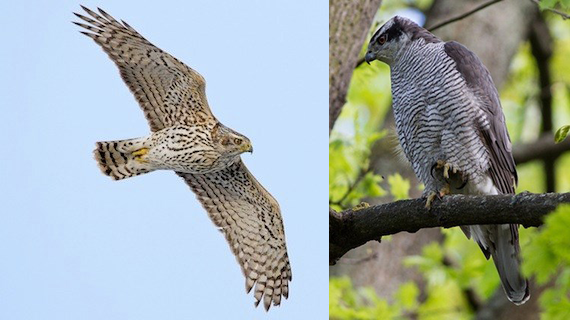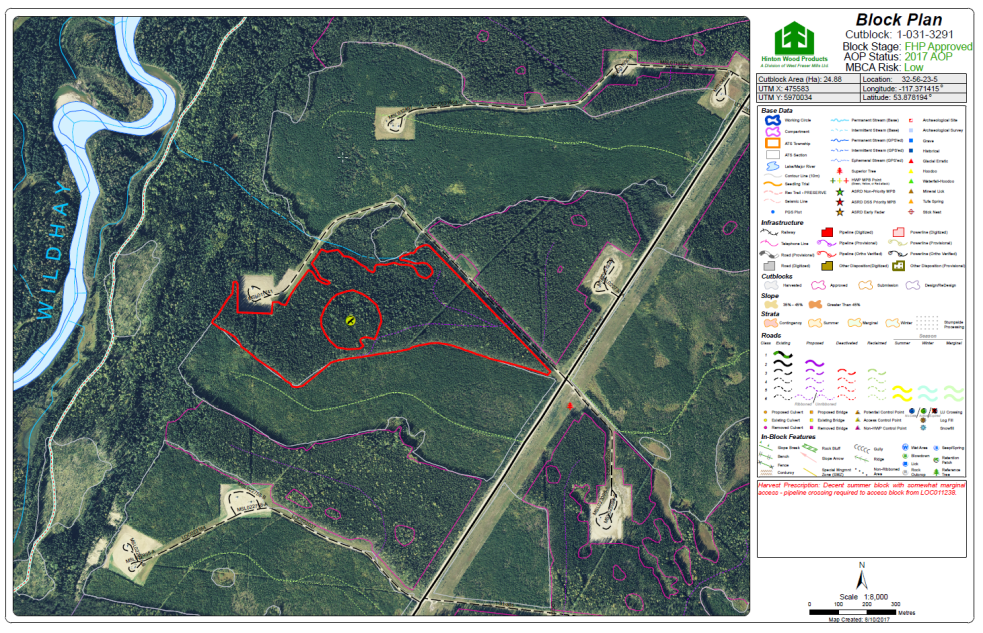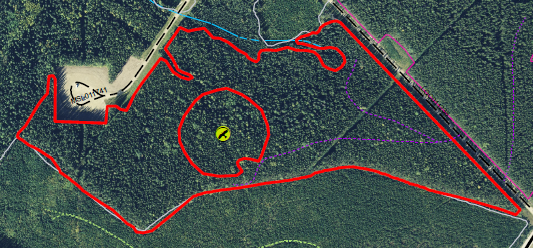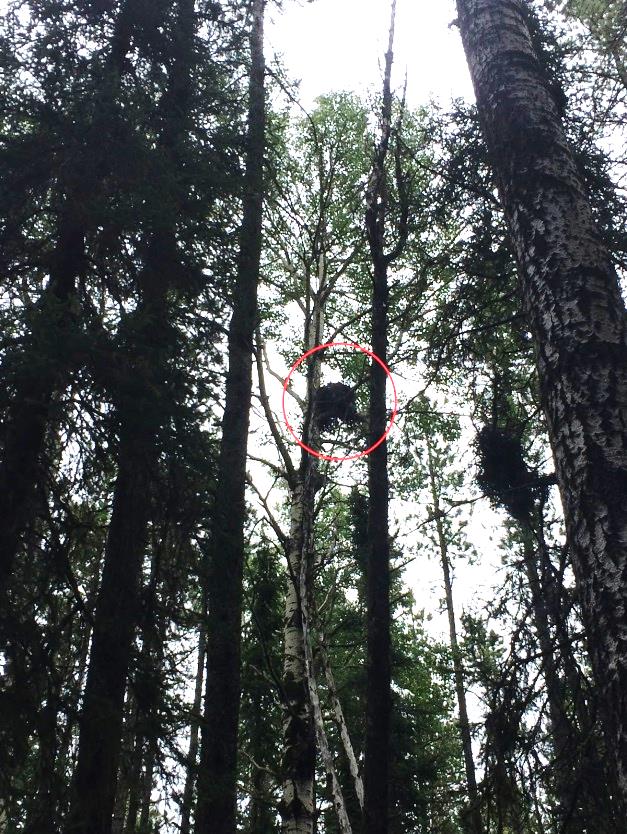The Goshawk Mission
14 août 2017 16:46 Laisser vos pensées
It was a rainy Friday morning in the office when I got a phone call that brightened my day right up! Larry, one of our operations supervisors, called me with a bit of hawk ‘emergency’. One of his contractor’s buncher-men had gotten out of his machine to look at something in the block he was harvesting, and was dive bombed by two large birds that he described as good-sized hawks that were brown/tan in colour.
This aggressive behaviour often indicates a nearby nest or nesting territory that the birds are trying to protect. It is a pretty big deal to find a nest in a block; raptor nests currently require a 100m radius buffer as a no harvest zone. I will be writing all about this in my next blog, so don’t worry about these details! I want to give a quick acknowledgement to the loggers for being diligent in recognizing there may be a nest nearby, and for reporting it to us right away!
Since Laura (my supervisor) was home sick and out of contact for the day, Larry asked me to go out to the block and tell the contractors what to do about the birds, so I made some maps and headed out to the site. The first thing I needed to do was identify the species, a challenging thing to do in the dense pine-spruce forest where we were. All I could see was vague silhouettes above the trees, and occasionally the birds would swoop right down close to us. What gave away the identification was my ability to recognize the birds vocalizations – a difficult skill to acquire that I have been working hard to develop this summer. I determined that we were working with two juvenile Northern Goshawks, Accipiter gentilis (Firgure 1)! This species is recognized as a species or concern in our forest management area and it was my first time ever seeing one in the field.

Figure 1. I wasn’t able to capture any images of the Goshawks that I saw, so I pulled these images from Cornell University Lab of Ornithology1 to show you guys what these magnificent birds look like. Right: an adult male. Left:a juvenile like the two I saw in the field.
After I determined what species we were dealing with, it was easier to interpret the behaviour and predict the nest location. Goshawks have huge nesting territories, and often build multiple nests in close proximity to each other; there was a good chance the nest wouldn’t even be in our block polygon! I decided the best thing to do was walk the entire block and make sure we didn’t have any nests so that operations could continue.
The logging foreman accompanied me as we looped around the western portion of the block. The birds followed us, showing various signs of stress. As we hiked towards the center of the block, we came into a mixed wood patch where the aspen density increased, and sitting right in the middle of a wet draw stood one tall, fat aspen tree, with an intricately constructed nest perched perfectly in it’s branches (Figure 2)! I was thrilled to see an active nesting site!
After taking a GPS point and examining the tree, the foreman helped me to tie up ribbon, creating a temporary boundary 110+m away from the nest tree. I decided to do this to keep the bunchers far enough away until a planner forester could return with a proper GPS and redesign the block to incorporate West Fraser’s nest conservation initiatives. Thanks to the contractors recognizing signs of nesting behaviour, and the communication among West Fraser employees, this nest will be protected for the remainder of its endurance.

Figure 3. A map I made for the purpose of this blog so show an overview of the block. The red outline represents the new block boundary.

Figure 4. Zoomed in from the above map. The little indent in the buffer around the nest is where the buncher man was harvesting when he recognized the birds. The wood had already been cut there, so the buffer is only about 80m away from the nest tree in this spot.
This experience, which was a highlight in my summer, showed me how I have grown so much in my skills, knowledge, confidence, and decision making in the past few months. That’s one thing I love about this job and having a career in forestry; I am always learning and experiencing new things. This is also a great example of biological/ecological knowledge playing a role in real management decisions and conservation efforts, and it feels really good to a part of it.
Thanks for reading!
Syd
References:
1 https://www.allaboutbirds.org/guide/Northern_Goshawk/id

